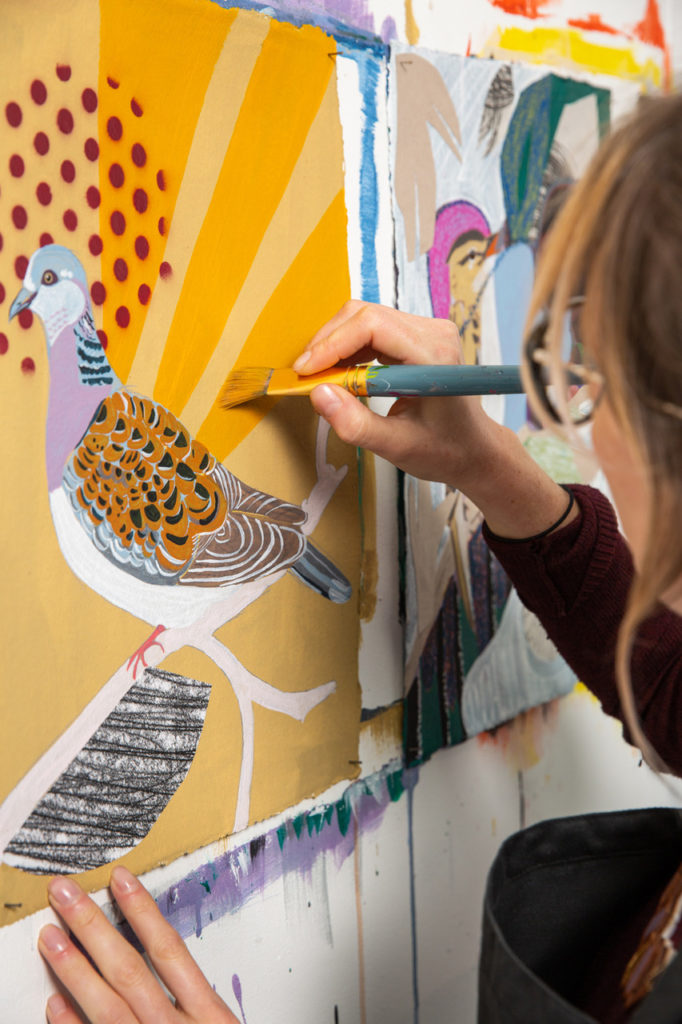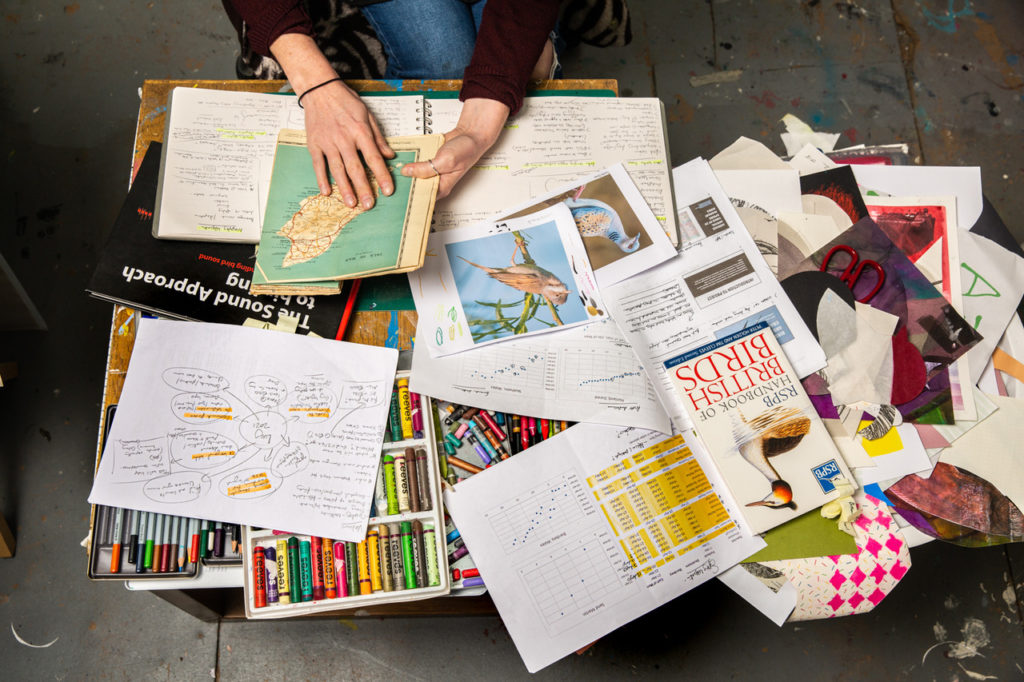Ceri Levy chats to artist Lucy Stevens as an exhibition of her work, examining the effects of climate change on migratory birds, opens in Leicester.

Migratory birds are a wonder. One minute they’re flying high over herds of elephants in Africa and the next they’ve flown 3,000 miles or more to breed and feed in trees dotted all over the UK. This is invariably a difficult and arduous journey; a miracle that they repeat every year. But something is wrong: the numbers of our summer visitors are in decline. Take the turtle dove, for example. In the 1960s it was believed that there were 250,000 of them spending their summers on these shores, and now it is estimated that there are 5,000 at the most. I have only ever seen one here twice in the last ten years, and that was by making specific trips to see a discovered bird. Their cooing sounds were apparently the sound of summer in years gone by, but many of us have never experienced this carefree sound, and the truth is we possibly never will. There are myriad reasons this has happened, not just to this bird, but to so many other migrants as well. An exhibition in Leicester has honed in on a very specific reason for the decline in so many migratory species — climate change.
Lucy Stevens is a multimedia artist who is adept at switching between disciplines, whether that’s sound art, painting, or collaborating with photographers and musicians on various projects. Lucy’s latest exhibition Chasing Seasons focuses on the effects of climate change on the species that come to visit us annually. She is presenting the exhibition in collaboration with the British Trust of Ornithology and the Leicestershire and Rutland Wildlife Trust and hopes to continue a dialogue which has concerned many for a number of years. The show has also been funded by an Arts Council National Lottery grant.
I caught up with her as she finalised the show and started getting ready for its launch, and Lucy explained the show’s purpose, and why now’s the perfect time for it. “This exhibition is mainly about migrating birds and seabirds as they’re the ones most affected by climate change, because the planet’s heating up and birds are almost chasing spring. As spring arrives earlier, they’re laying eggs earlier and therefore migration is earlier as well, so it’s about raising awareness of that. I think during the pandemic a lot of people have turned to nature for the first time or they’ve noticed it more because there’s been less traffic and noise and they’ve developed an appreciation for it. As they notice it more they build a connection and want to know if it’s a robin singing or a song thrush or something else. It’s developing that connection and from there it’s encouraging people to learn more and get involved with citizen science.”
The show selects an array of birds, painted in a riotous carnival of colours and abstract shapes to support the chosen star of the picture. At first glance the paintings are a celebration, but alongside the joy there is a moment of realisation that every species represented is a returning breeding bird in decline. Climate is reflected in the work — “A lot of these bird portraits are weather-based, so they’ll either show storms or sun or heat waves”.

Lucy’s partners in the show have provided her with much data on birds and climate change for her to pore over. This is something that appeals to her sensibilities. “I have always been interested in visualising data. In terms of climate change I normally pull out quite complex and detailed information from my research and it’s often taking data that is only available to academics, dense texts, and then translating it. I’ve pulled out the information I think I can interpret. For example, the cuckoo eats the garden tiger-moth and I wanted to know how many moths are eaten in a day and nobody could answer that. And when there’s no information, the art becomes more abstract. There’s only the correlation between the decline of the moth and the decline of the cuckoo so I’ll use shapes and colours of the moth or the cuckoo to work from.” Lucy is an artist who understands the importance of marrying art and science; her paintings articulate difficult academic reports into language that we can all understand and learn from.
This is an exhibition borne of our times and about our times: the Anthropocene age, the age of human impact upon the planet, which has so far provided extraordinary problems for a multitude of creatures. Chasing Seasons is just a proffering of the artist’s baton — it’s up to all of us to decide whether, in our own small ways, we will help to make a difference for our co-habitants on this planet. But make no mistake: Lucy has given us an opportunity to think and consider and she has created a beautiful, engaging and exciting exhibition to keep the dialogue going. This is exactly what we need; beauty with a message.
*
‘Chasing Seasons’ takes place between Friday 7 – Thursday 20 May at StudionAme, 2 Brougham Street, Leicester LE1 2BA. If you can’t get to Leicester for the show, Lucy will be placing a video of the exhibition up on her website.